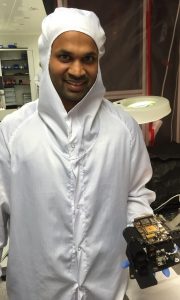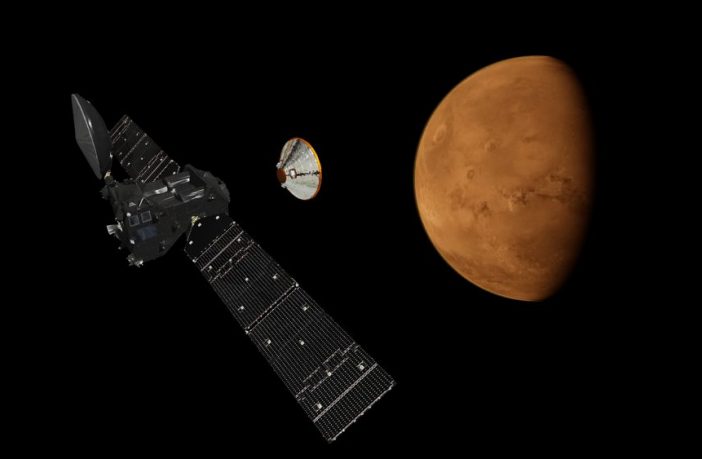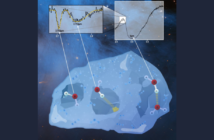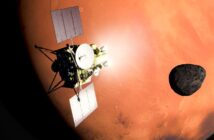After a year of extremely dangerous aerobraking, the ExoMars Trace Gas Orbiter (TGO) will reach its final orbit and start collecting data from the atmosphere of Mars. Onboard the Orbiter is an instrument developed by academics from The Open University. Nadir and Occultation for MArs Discovery (NOMAD) will ‘sniff’ the atmosphere for methane – a gas that could have been produced by living organisms.
Co-Principal Investigator of NOMAD and Senior Lecturer at The Open University, Dr Manish Patel, explains:
“Any mistakes could be catastrophic”

Dr Manish Patel
“Aerobraking is a ‘free’ way to get into the right orbit. Typically when a spacecraft arrives at Mars, it is travelling so fast that its orbit is stretched; we could fire the thrusters, effectively slamming on the brakes, to slow down into a smaller orbit, but this requires huge amounts of fuel and on any space mission, fuel equals mass, which equals money.
“Instead we drag the spacecraft through the thin layer of the outer atmosphere to slow the spacecraft down; the force on the spacecraft is really low – about the pressure of a piece of paper resting on your hand – so it has taken nearly a year to slowly reduce its orbit. Of course, when travelling at extremely high speeds, any mistakes could be catastrophic.”
Mapping the planet
“The orbit of the ExoMars TGO is the key to the success of our mission. We need a circular, continued low orbit to map the whole planet and continue its orbit. This way, if any trace gases are in the atmosphere, we’ll detect them. Also, the low altitude is great to photograph the surface of Mars as the closer we are, the clearer our view will be.”
Mission progress
In April 2018, the ExoMars TGO began transmitting photographs of the surface from its camera system. Learn more about what it has discovered on the surface of Planet Mars.



